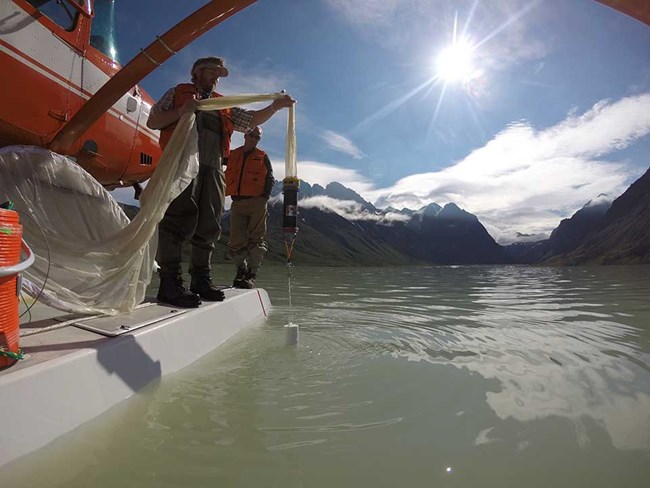
To understand freshwater contaminants, we measure the levels of mercury in lake fish. Resident (non-migratory) lake fish are key indicators of ecosystem health in southwest Alaska and important to recreational and subsistence fisheries. Many contaminants accumulate over time in fish tissue, especially in long-lived piscivorous species. When contaminant levels reach certain thresholds, fish consumption can be harmful and safety advisories can be issued for particular lakes or species. Consequently, elevated contaminant levels have human health ramifications, as well as broader ecological consequences.
Since 2005, we have sampled more than 300 fish, representing 9 species from 18 lakes in 2 park units. These samples indicate that some resident lake fish species in southwest Alaska lakes have elevated concentrations of mercury, the majority of which is methylmercury, a potent neurotoxin. Why do these fish, which inhabit some of the most pristine and remote waters in North America, have such elevated mercury levels? And what accounts for differences in fish mercury levels among lakes?
Factors driving fish mercury levels can be grouped into two broad categories: distant and local. Distant factors are atmospheric emissions (notably from coal burning), and subsequent long-range transport and deposition. Local factors, such as glaciers, wetlands, and salmon, influence the distribution of distantly derived mercury. Fish age and species also help determine mercury concentrations, in that older top predators tend to have higher concentrations. Understanding the interplay of each of these factors will help make sense of the observed pattern in the mercury levels of fish.
Our objectives are to:
-
Assess spatial differences in mercury contamination of resident lake fish.
-
Evaluate temporal trends in mercury contamination of resident lake fish.
-
Identify lakes where mercury contamination of resident lake fish may pose a risk to humans by surpassing accepted toxicological benchmarks.
We monitor resident lake fish in four high priority lakes in Katmai and Lake Clark national parks and preserves.
Contact: Krista Bartz
Learn more
Last updated: January 31, 2019
